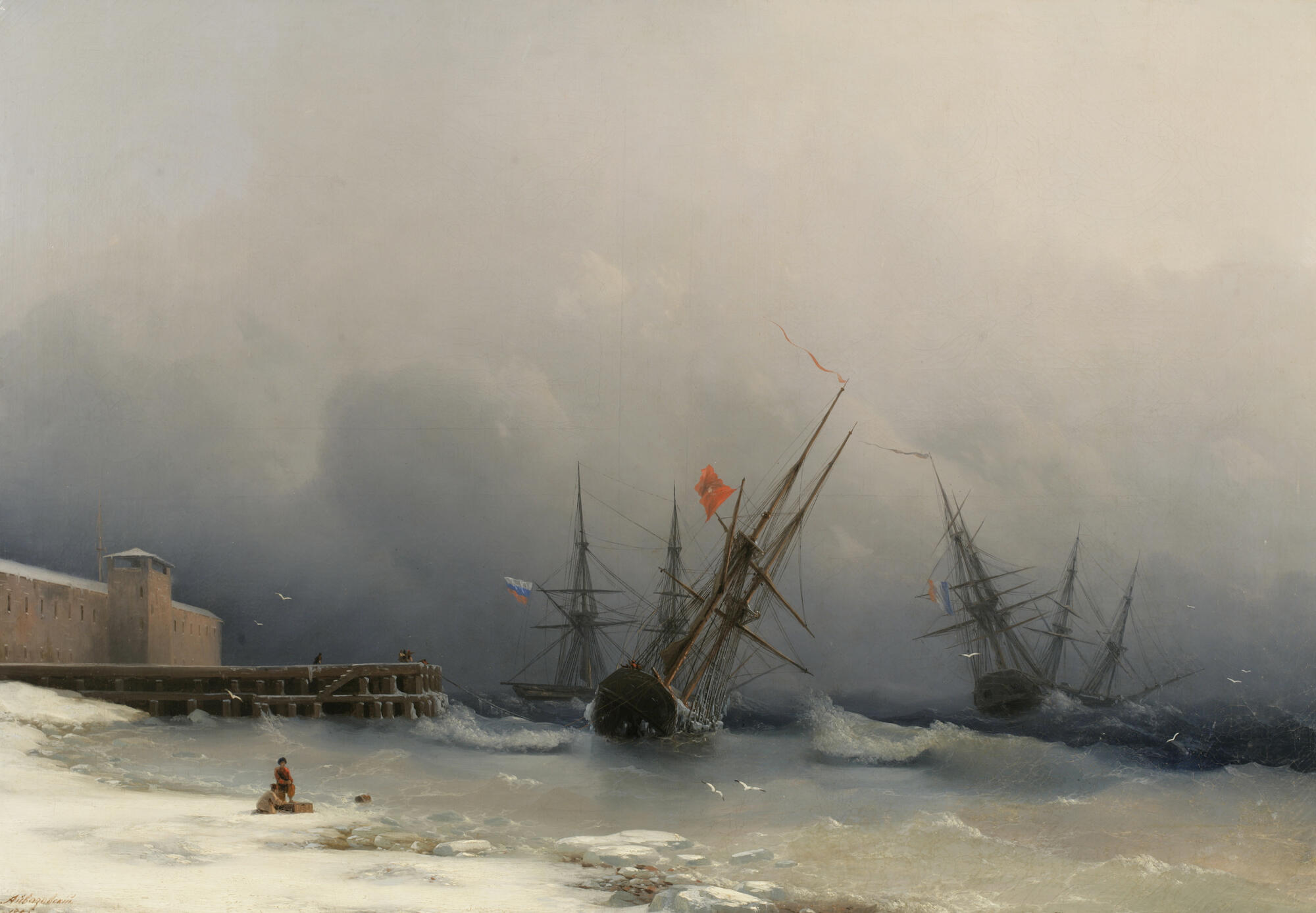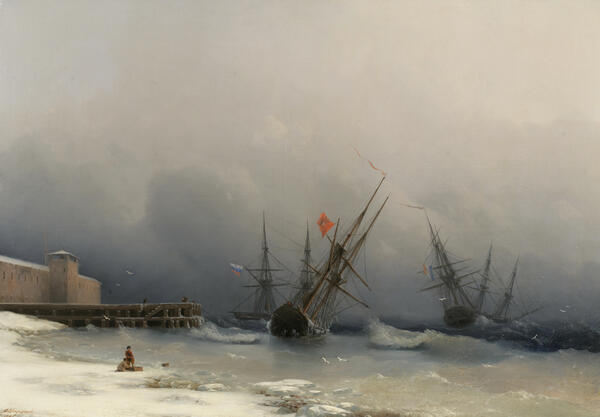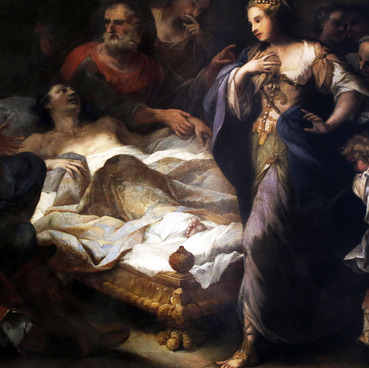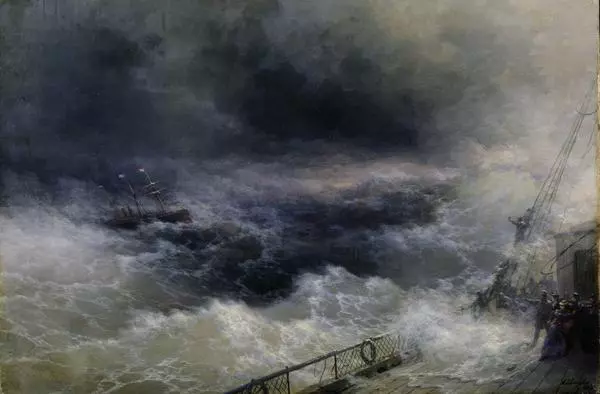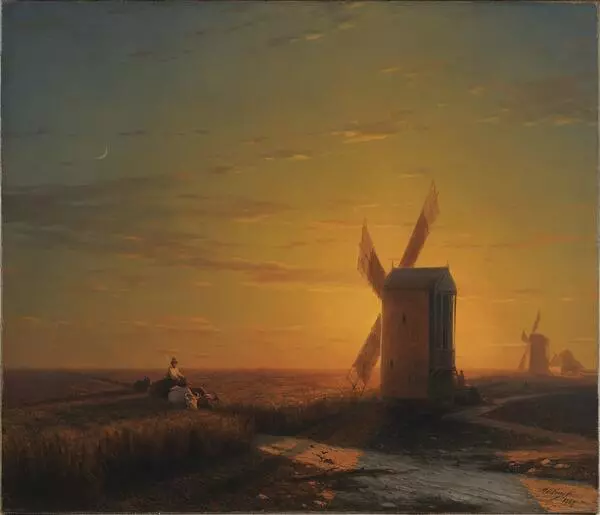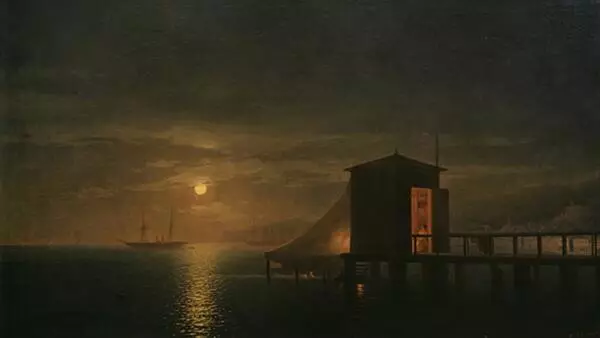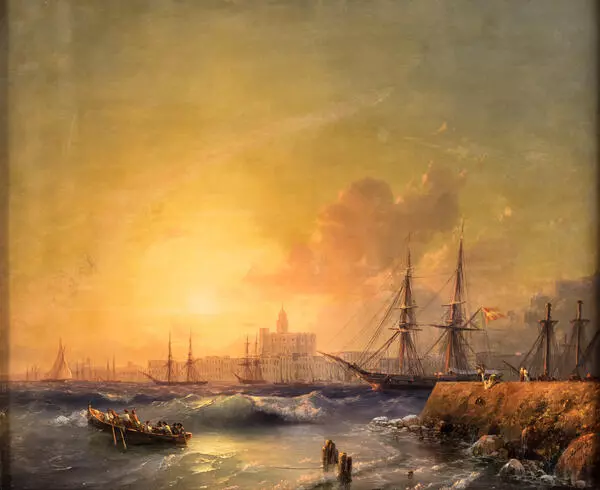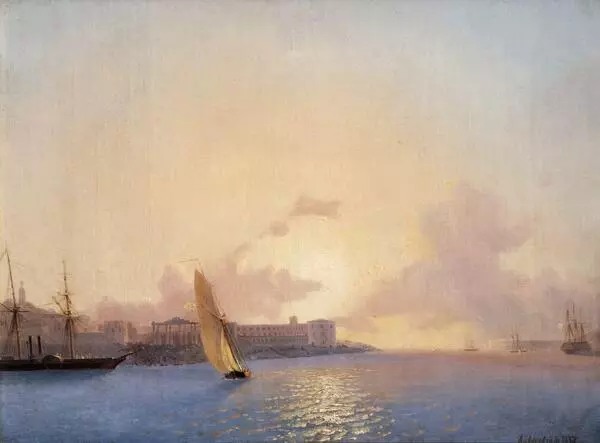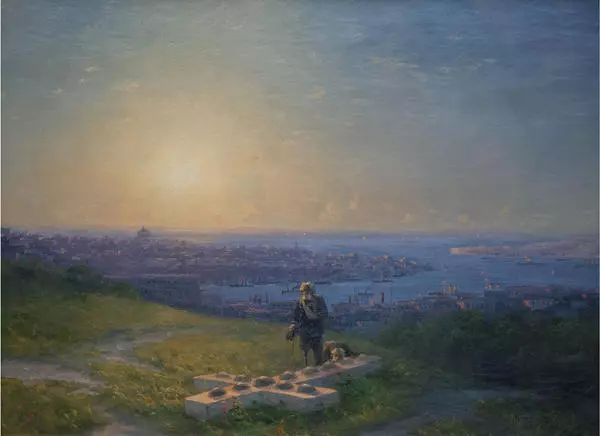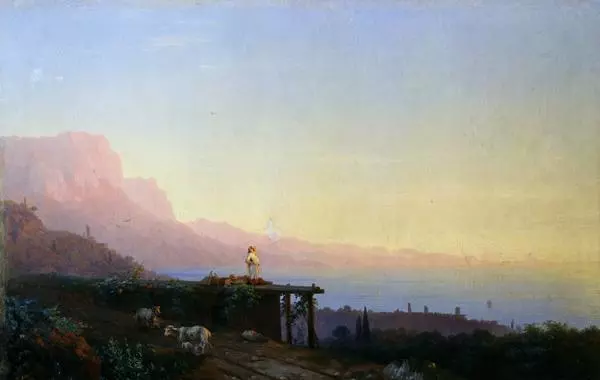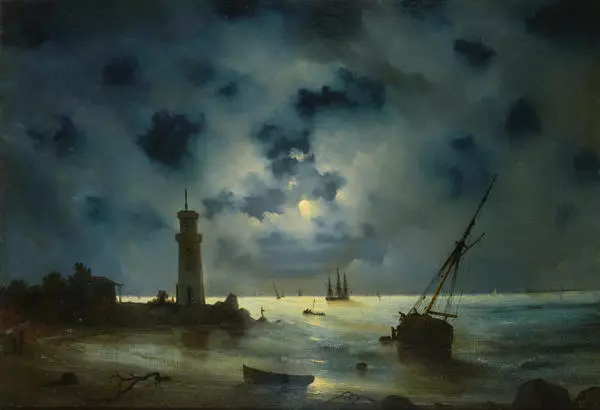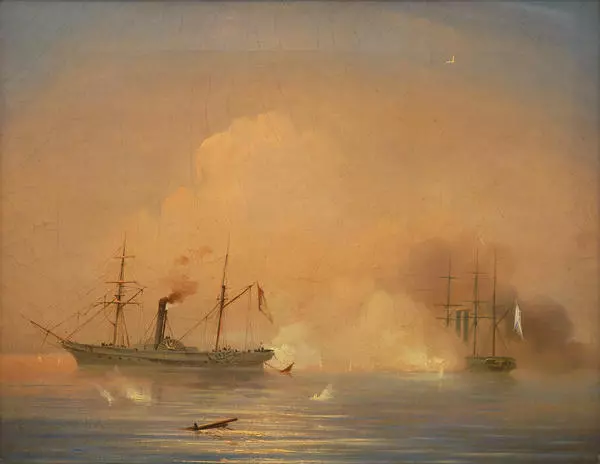The artistic works of Ivan Aivazovsky, who is a romantic painter, associated with the sea. Born in Feodosia, he was in love with water and ships since his childhood. He became a passionate painter of maritime space and forces of nature, a chronicler of the Russian Navy Victories.
During his long life, the marine artist created more than six thousand paintings, conveying the sea’s greatness in all its forces. He worked swiftly and passionately — he could paint a large canvas within three hours. Aivazovsky’s art style was improvisation. He hardly sketched from life as he had a phenomenal artistic memory and imagination and could ‘make up’ pictures in the Studio.
The Tula Museum of Fine Arts can boast of Aivazovsky’s five works, which can be seen at the exhibition. Storm Signal is one of the best among them. This painting was given to the museum in 1919 by Prince Gagarin’s estate.
The painting was created in Feodosia in 1851. The artist embodied his favorite topic — the might and power of the sea. Using a tense cold palette, the author showed the sky and waves coming into conflict near the snow-covered coast. Aivazovsky always began by painting the sky on canvas and tried to finish it in one session, even if the canvas was large. Here the sky moves closer to the ships with low leaden clouds, merging with the sea and comprising a formidable unity. Static figurines of observers emphasize the dynamics of the sky and sea. The artist used a weight contrast technique in his composition to show the vulnerability of ships in a raging storm: a mighty static fortress with a pier is compared with unstable ships and their cage masts. It seems that under the increasing pressure of waves, the ships are about to break anchor and be taken out to the open sea, as what happened more than once.
The peculiarity of this canvas is the snow-covered sea coast, quite rare in Aivazovsky’s landscapes. Coastal waves and a bright spot of the beach create a tonal contrast that enhances the picture’s expressiveness and dramatic sounding. The work is distinguished by the richness of color shades created by the artist to produce the waves and the sky.
During his long life, the marine artist created more than six thousand paintings, conveying the sea’s greatness in all its forces. He worked swiftly and passionately — he could paint a large canvas within three hours. Aivazovsky’s art style was improvisation. He hardly sketched from life as he had a phenomenal artistic memory and imagination and could ‘make up’ pictures in the Studio.
The Tula Museum of Fine Arts can boast of Aivazovsky’s five works, which can be seen at the exhibition. Storm Signal is one of the best among them. This painting was given to the museum in 1919 by Prince Gagarin’s estate.
The painting was created in Feodosia in 1851. The artist embodied his favorite topic — the might and power of the sea. Using a tense cold palette, the author showed the sky and waves coming into conflict near the snow-covered coast. Aivazovsky always began by painting the sky on canvas and tried to finish it in one session, even if the canvas was large. Here the sky moves closer to the ships with low leaden clouds, merging with the sea and comprising a formidable unity. Static figurines of observers emphasize the dynamics of the sky and sea. The artist used a weight contrast technique in his composition to show the vulnerability of ships in a raging storm: a mighty static fortress with a pier is compared with unstable ships and their cage masts. It seems that under the increasing pressure of waves, the ships are about to break anchor and be taken out to the open sea, as what happened more than once.
The peculiarity of this canvas is the snow-covered sea coast, quite rare in Aivazovsky’s landscapes. Coastal waves and a bright spot of the beach create a tonal contrast that enhances the picture’s expressiveness and dramatic sounding. The work is distinguished by the richness of color shades created by the artist to produce the waves and the sky.
